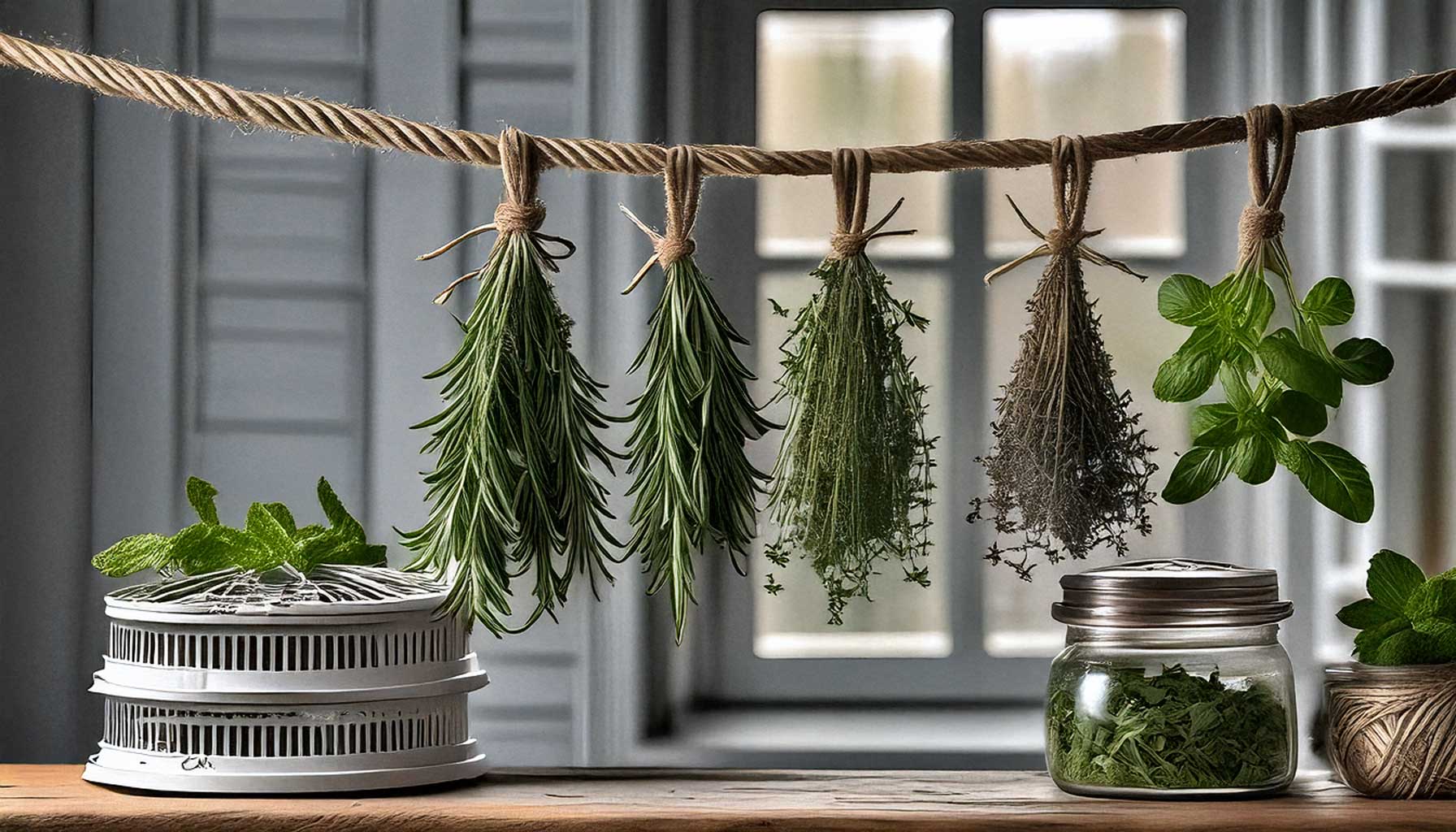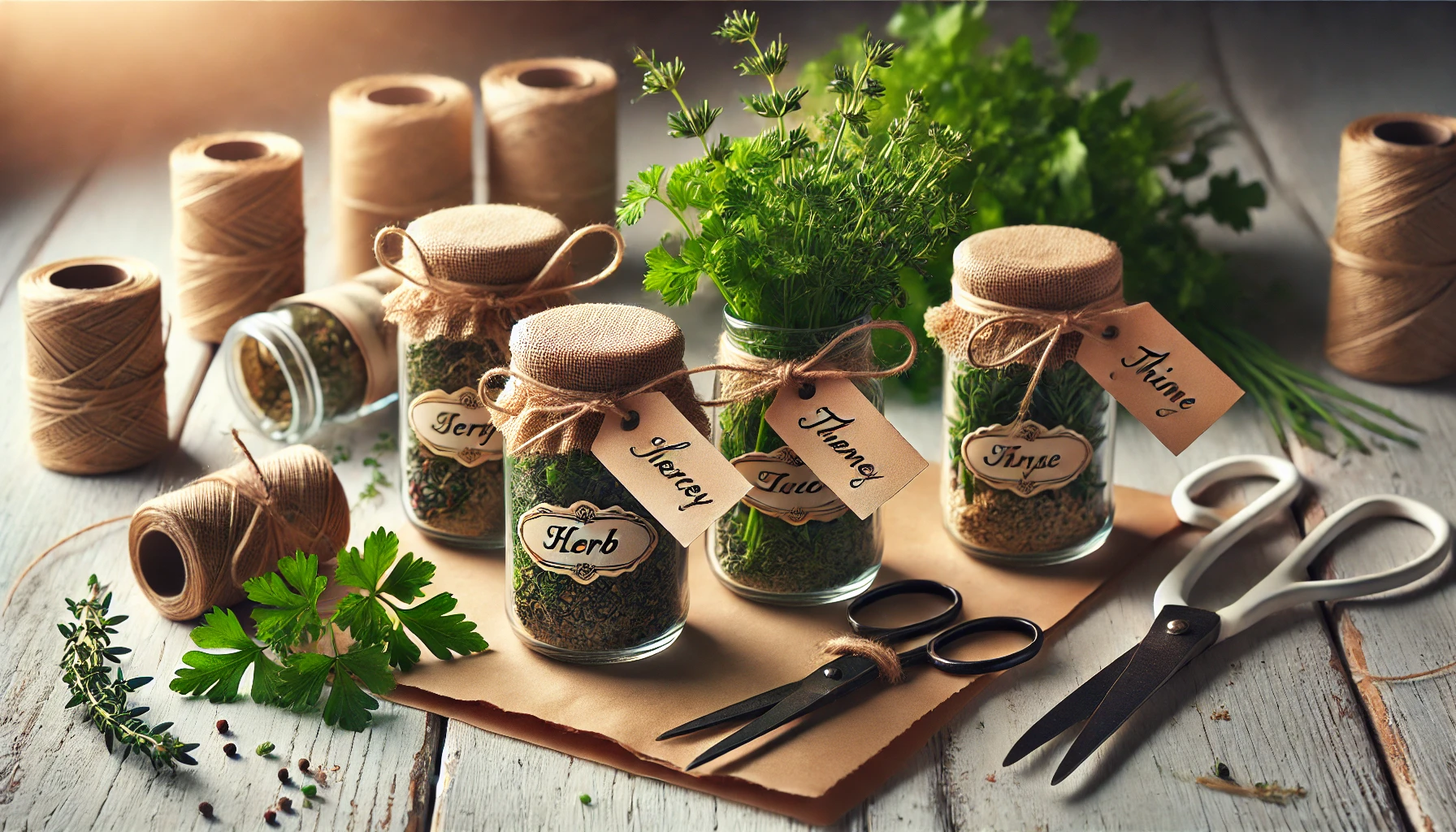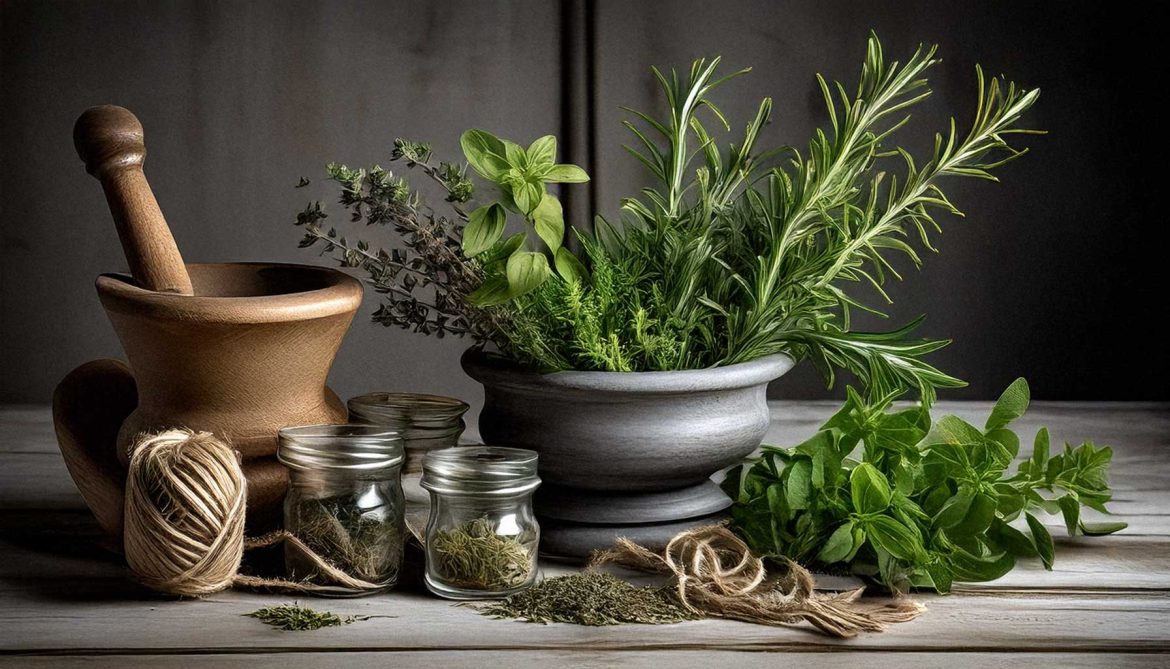Introduction: The Joy of Creating Your Own Herb Blends
Are you looking for a creative way to enhance your cooking with a personal touch? Homemade herb blends allow you not only to save money but also to create unique flavor experiences that elevate your dishes to the next level. Whether Mediterranean, exotic, or local – the possibilities are virtually endless.
In this article, you’ll learn how to make your own herb blends with simple steps, how to dry and store them properly, and explore exciting recipe ideas that bring variety to your meals.
Why Make Your Own Herb Blends?
The Benefits at a Glance
- Freshness and Authenticity: By using self-harvested and dried herbs, you ensure that only high-quality ingredients go into your blends.
- Control Over Ingredients: No additives, just pure flavors tailored to your taste.
- Creativity and Individuality: You decide which herbs to include – perfectly customized for your dishes.
- Sustainability: By using seasonal and local herbs, you support the environment.
Health Benefits
Many herbs contain valuable essential oils that benefit both the body and mind. In traditional Chinese medicine, herbs play a central role, with their effects often being enhanced when combined. In cooking, herb blends also offer a healthy alternative to salt or sugar, helping you improve your diet naturally.
Basics: What Makes a Great Herb Blend?
Balancing Flavors
The secret to a good herb blend lies in balance. Each herb should complement the others without overpowering them. The goal is a harmony of flavors that delights the palate. For example, combining robust herbs like rosemary or thyme with lighter options like parsley or chives creates depth without overwhelming the dish.
Essential Tools and Materials
Creating flavorful herb blends requires a few key tools:
- Herbs: Fresh or dried herbs, either self-harvested or store-bought.
- Grinder or Blender: For finely processing herbs.
- Airtight Jars: To store your blends and preserve their aromas.
- Optional: Additions like salt, pepper, or oil for specific blends.
By using these tools and fresh ingredients, you can ensure that your homemade blends are both delicious and long-lasting.
How to Dry Herbs: Step by Step
Different Drying Methods
Proper drying preserves the flavor and nutrients of herbs. Here are three popular methods:
- Air Drying: The slowest method but ideal for maintaining flavor and nutrients. Best for hardy herbs like rosemary, thyme, and oregano.
- Oven Drying: A quicker method, but be cautious with heat to avoid flavor loss. Herbs like sorrel and borage can be delicate in this process.
- Dehydrator: Offers precise control and is convenient for consistent drying.
Optimal Storage Conditions
Once dried, herbs should be stored in airtight containers in a cool, dark place. This ensures the aroma remains fresh for months. Regularly check your blends for freshness to enjoy their full potential in your cooking.

Popular Herb Blends and Their Uses
Provençal Herbs: A French Classic
One of the most beloved herb blends in French cuisine is the “Herbs of Provence.” This aromatic mix typically includes oregano, rosemary, savory, thyme, and basil. Some variations add lavender, bay leaves, or orange zest for a unique twist.
This blend is perfect for grilled vegetables, meats, or tofu. It also enhances the flavor of pasta, casseroles, and stews. Whether sprinkled on fresh salads or incorporated into baked goods, Provençal herbs bring the essence of Southern France to your plate.
Italian Blends: A Taste of Tuscany
If you love Italian cuisine, crafting your own pasta seasoning is a must. Combine two parts oregano and basil with one part rosemary, thyme, and sage. For an authentic Tuscan flair, include a pinch of marjoram. This Mediterranean mix is perfect for pizza, pasta, and salads, infusing dishes with a rich, savory flavor.
Za’atar: A Middle Eastern Delight
Za’atar, a traditional Middle Eastern seasoning, combines sesame seeds, thyme, marjoram, basil, savory, lime zest, sumac, and salt. Its nutty and tangy flavor makes it ideal for meat, vegetables, and dips. Sprinkle Za’atar over flatbreads or mix it with olive oil for a classic Levantine touch.
| Ingredient | Percentage |
|---|---|
| Sesame Seeds | 30–40% |
| Thyme | 20–30% |
| Marjoram | 10–15% |
| Basil | 5–10% |
| Savory | 5–10% |
| Lime Zest | 2–5% |
| Sumac | 2–5% |
| Salt | 5–10% |
Salad Herb Blends for Fresh Dressings
For a quick and flavorful salad dressing, mix dill, parsley, chives, borage, and chervil. Combine two teaspoons of the blend with oil, vinegar, or lemon juice and a touch of sweetness. This mix can be stored in a jar for convenience, ensuring you always have fresh herbs ready for your salads.

Creating Unique Herb Blends for Soups and Beyond
Soup Seasoning: The Foundation of Comfort
Homemade soup seasoning is a game-changer for your kitchen. A classic mix includes parsley, lovage, and chives, combined with finely chopped carrots, leeks, and celery. For extra depth, add thyme, bay leaves, or garlic.
Experiment with variations by incorporating radish greens, fennel tops, or kohlrabi stems. After preparing the mix, you can dry it in an oven at 50°C (122°F) or store it as a paste by blending with salt in a 7:1 ratio. This versatile seasoning not only elevates soups but also aligns with sustainable cooking by utilizing vegetable scraps.
How to Store and Preserve Herb Blends
Proper storage is crucial for maintaining the flavor and aroma of your herb blends. Here are some tips:
- Use airtight jars to protect herbs from moisture and oxygen.
- Store blends in a cool, dark place to preserve their freshness.
- Regularly check for signs of staleness, and replace blends if they lose their aroma.
Dried herbs typically last 6–12 months, while oil-based mixtures, such as pestos, should be consumed within weeks. Conduct a smell and taste test to ensure quality before use.
| Product Type | Recommended Shelf Life |
|---|---|
| Dried Herbs | 6–12 months |
| Ground Spices | 6–12 months |
| Tea Blends | 12–18 months |
| Whole Spices | 2–5 years |
DIY Herb Blends as Thoughtful Gifts
Creative Ideas for Gifting
Homemade herb blends make fantastic gifts for any occasion. Here are some ideas to get started:
- Package a Mediterranean blend in a decorative jar for a thoughtful culinary gift.
- Combine herb mixtures with homemade infused oils or salts for a delightful DIY gift set.
- Personalize labels and include a recipe card to inspire the recipient.
These gifts are not only practical but also carry a personal touch, perfect for food lovers and home cooks.
Avoiding Common Mistakes
When making herb blends, it’s easy to make a few missteps. Avoid these common errors:
- Over-drying: High temperatures can strip herbs of their aroma.
- Lack of cleanliness: Ensure all tools and jars are sanitized to maintain freshness and hygiene.
- Improper storage: Exposure to moisture or air can compromise quality.
For delicate herbs like basil, freezing instead of drying preserves their flavor better. By following these tips, your homemade herb blends will be flavorful and long-lasting.
Conclusion: Elevate Your Cooking Naturally
Creating your own herb blends is not only a rewarding hobby but also a way to bring fresh, unique flavors to your kitchen. From Mediterranean classics to exotic mixes like Za’atar, the possibilities are endless. With the right techniques and a touch of creativity, your culinary creations will stand out.
Ready to start experimenting? Share your favorite herb combinations in the comments and inspire others to explore the art of homemade herb blends!
